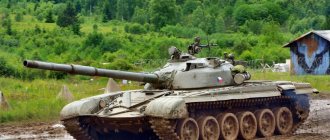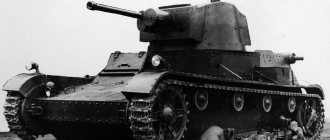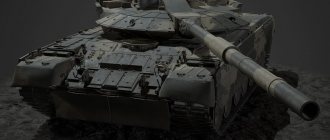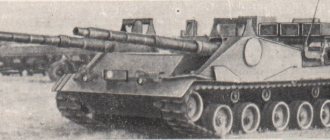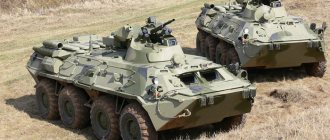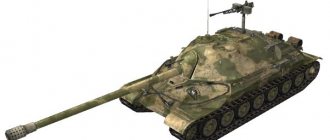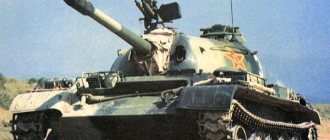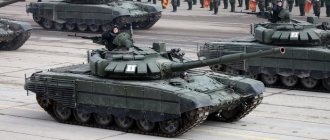The troops receive modified versions of the T-72, T-80 and T-90. What the updated vehicles have in common is better mobility due to increased engine power, additional anti-cumulative shields and more advanced dynamic protection, new equipment for viewing the battlefield and targeted shooting, as well as commander control of combat vehicles within the framework of a single tactical plan. The latter circumstance allows them to effectively interact with other combat units, including the new T-90M Proryv-3 and T-14 Armata tanks.
T-72B3
Speaking at the end of the 2020 Army Games, Russian Defense Minister Army General Sergei Shoigu said that “the Games have seriously contributed” to the process of technical improvement of the original T-72 line. First, the crews participating in the competition competed in T-72B (B1) vehicles. Then a modified version with the suffix “B3” appeared at the test site. “The technical solutions used on the modification of the T-72B3 made it possible to increase mobility, reliability and ergonomics,” noted the head of the military department.
The search for the optimal appearance of the modernized version took almost a decade. The first samples of the T-72B3 appeared in public in 2011. Over the next couple of years, vehicles of a similar appearance entered combat units. They differed from the original T-72B1 in the 2A46M-5 gun with improved ballistics and service life. The automatic loader was modified to use new shells with better armor penetration.
© Photo by the author The first samples of the T-72B3 appeared in public in 2011.
Visibility and shooting accuracy were increased thanks to the Sosna-U multi-channel sight-rangefinder with a thermal imaging camera and automatic target tracking (LKU missiles), as well as a digital ballistic computer with a weather sensor. The gunner can also use a backup 1A40-4 rangefinder sight. The tank commander has a combined (day and night) electro-optical device TKN-3MK.
To increase resistance to enemy weapons, Kontakt-5 dynamic protection units are installed on the turret and hull of the tank. Outdated radio communications equipment was replaced with VHF radio stations R-168-25U-2 from the Aqueduct complex.
Main weapons
The main weapon of the T-72 is a 125 mm smoothbore gun. In addition to it, two machine guns are used - NSVT (Nikitina-Sokolova-Volkov tank) "Utes" 12.7 mm and PKT (Kalashnikov Tank machine gun) 7.62 mm. The first is used as an anti-aircraft weapon and can only be aimed manually with the hatch open. PKT is paired with a gun.
125 mm smoothbore gun
The T-72 uses the D-81TM smoothbore gun with the index 2A26M. The barrel length is 48 calibers. In the horizontal plane, the tank is capable of firing along the entire circumference. The vertical guidance range varies from –6°13′ to +13°47′.
Firing range and ammunition
The firing range of the T-72 gun is designed at 9.4 km. The tank's ammunition load is 39 rounds. Of these, 22 are supplied with automatic reloading, the rest are loaded manually by the commander.
T-72B3 with KDZ
Tank biathlons 2013-2017 were remembered for the appearance of T-72B3 samples with additional modifications based on testing experience, initial operation in units and participation in combat operations in hot spots. In addition, individual copies of the modernized vehicles took part in a dynamic display at the Alabino training ground, while others were exhibited along the path of spectators to the stands for more detailed acquaintance. According to military personnel who gave explanations to the public at the exhibition samples, the engine power was increased to 930 hp, and in some cases even higher.
© Photo by the author
On static sites of the International Military and Technical Forum "Army" 2017-2018. T-72B3 with KDZ was exhibited.
On static sites of the International Military and Technical Forum "Army" 2017-2018. T-72B3 with KDZ was exhibited. The T72B3 with KDZ differed from the vehicles participating in tank biathlons in appearance: different side screens, additional protection in the form of bars, plus bags hung on the sides of the tank for better protection against cumulative weapons.
According to the data table for it, a specific copy of the T-72B3 with KDZ was equipped with a V-84M engine with a power of 840 hp, while the standard T-72B (B1) was equipped with a V-84-1 with a similar indicator, and the original T- 72 (no suffix) - B-46 with 780 hp.
Combat unit design
Layout of the T-72
The design of the T-72 has a classic layout. The body is divided into three compartments. In the front part there is a control compartment with a driver. In the middle is the fighting compartment with the gunner and commander, located in the turret; in the hull below them is the ammunition. The engine-transmission unit is located at the rear of the tank.
T-72B3M
According to media reports, in March 2016, UVZ received a contract worth 2.5 billion rubles to upgrade 150 tanks to the B3 version. According to the contract, the work includes re-equipment with the V-92S2F with a power of 1,130 hp. (special development for installation in the dimensions of the power compartment of combat equipment) and the installation of the Relikt dynamic protection kit instead of the more ancient Kontakt-5.
It is also reported that the track tracks are being replaced with more reliable ones, with a parallel hinge. The placement of ammunition and fuel in the tank has been optimized, a climate control system, additional protective screens and grilles have been installed. Domestic matrices of IR devices are used instead of imported ones. Some tanks are equipped with a new panoramic commander's sight, which has improved the ability to find targets and accurately aim weapons.
Experience from the Middle East is reflected in the installation of an automatic transmission, which allows for faster reverse gear. Syrian tank crews often used the T-72B3 during battles in populated areas, quickly moving out of cover to shoot at the enemy, and without hesitation, returning back so as not to fall under return fire.
© Photo by the author
T-72B3M were exhibited at the Army forum.
Tanks of the “B3” modification, with a new look and more powerful, have recently been attracted to participate in parades, competitions and exhibitions. At the Army forum sites, including a static exhibition at the Congress Center in Kubinka, samples were exhibited with data tables for them, which made it possible to compare them with earlier exhibits.
According to the tables, the mass in combat equipment increased from 45.6 to 46.5 tons, and the engine power increased from 840 hp. (the first batches of T-72B3 retained the B-84, which had undergone major overhaul) up to 1,130 hp. (when installing a new V-92S2F). The maximum speed on the highway remained at 60 km/h. The highway range was reduced by fifty kilometers, to five hundred.
Speaking on September 6 this year. Following the results of the 2020 Army Games, Sergei Shoigu said that “a modification of the T-72B3M has appeared, which is not inferior in its characteristics, and in some ways superior to modern foreign tanks.” “The Ministry of Defense plans to modernize all T-72 tanks in service to this modification,” he said.
Armor
The first modernized version of the T-72A.
The T-72's armor is differentiated. The hull structure is rigid, box-shaped, assembled from sheets of rolled homogeneous armor steel. The frontal part consists of two plates converging in a wedge with combined armor. The top plate consists of an 80mm steel outer layer, a 105mm fiberglass laminate and a 20mm thick inner steel layer. The bottom plate is rolled homogeneous armor steel of 85 mm.
The given combined protection is equivalent to 305-410 mm of armor. The rest of the body is made of homogeneous rolled steel. Vertical sides - 80 mm in the front part and 70 mm in the engine-transmission part. The latter is separated from the fighting compartment by an armored partition.
The roof also consists of two armor plates, the bottom has a trough-shaped shape. On the first T-72 tanks, the turret protection was monolithic, which was considered a disadvantage of the vehicle. Later, the T-72A's turret also received combined protection. As the tank was modernized, it received additional armor.
T-80BVM "Motoball-2"
Starting from the mid-seventies of the last century until the collapse of the Soviet Union, domestic industry simultaneously produced two lines of main battle tanks. One is “Ural”, represented by the T-72 and its further development T-90; the other is represented by T-64 and T-80. The first was distinguished by the use of diesel engines, while the T-80 uses a gas turbine. Following the results of the fighting in the Chechen Republic, as well as as part of optimizing the size of the Armed Forces, it was decided to transfer the gas turbine tanks to storage bases.
At one time it seemed that upon completion of orders from South Korea and Cyprus for one and a half hundred T-80UE, this line would die out. However, the events of recent years have shown the opposite: the Ministry of Defense not only returned the T-80 from storage bases to combat units, but also decided to modernize it. The topic was entrusted to Omsktransmash JSC and SKB Transport Engineering JSC.
© mil.ru
Tankers of the Western Military District in the Moscow region received T-80BVM tanks.
The general direction of work is the unification of the T-80BV (1985) with the “Ural line”. T-80BVMs that have undergone modernization will receive a Sosna-U gunner's sight, communications equipment and other equipment from the T-72B3, and a protection system from the T-90M. The industry received an order to modernize combat vehicles of the T-80BM type during one of the Army forums. The relevant topic is “long-term in nature”. First, it is planned to release an initial batch of about 60-80 units to re-equip a couple of tank battalions.
The modernized model was first demonstrated in September 2017 on the occasion of Tankman’s Day on the territory of the 33rd combined arms training ground near the city of Luga, Leningrad Region. Then one vehicle performed in a dynamic display at the Alabino training ground during the Army-2018 International Military Forum. Externally, the updated tank is noticeably different from the T-80UE-1, which traditionally take part in large numbers at various events at the forum sites, performing target shooting in range conditions and demonstrating ease and precision of control in the “tank ballet”.
The number of T-80 fleet in the Russian Ground Forces is estimated by foreign sources: five hundred units in combat units and another three thousand in storage warehouses. Among this set there are modifications “B”, “BV” and “U”, which were assembled in Leningrad and Omsk. At first they were equipped with motors (developed by the design bureau named after V.Ya. Klimov) with a power of 1,000 hp, later - 1,100 and 1,250 hp. Over the years of serial production, the weight of the tank increased from 42 to 46 tons, and grew a little more during modifications.
© mil.ru
T-80BVM performs target shooting in range conditions.
The UE-1 modification, weighing 47 tons, accelerates to 70 km/h and has a highway range of 500 km. While maintaining the power at the same level, the improved GTD-1250 power units on the T-80BVM demonstrate lower fuel consumption, comparable to their “diesel counterparts”. In short, upgrading to the T-80BVM “Motobol-2” variant will significantly increase the combat capabilities of combat vehicles, bringing them to the level of modern requirements.
Purpose and protection system
T-72B3 is designed to perform various combat operations. Among them:
- elimination of enemy armored vehicles;
- destruction of enemy personnel;
- destruction of various types of fortifications and firing points;
- escort and support of ground forces during the offensive and defense.
The vehicle can carry out its assigned combat mission at any time of the day, regardless of weather conditions.
The type of armor of the modification in question provides reliable protection for the crew. The hull and turret are made of complex rolled steel, able to withstand most armor-piercing and sub-caliber projectiles, as well as all types of armor-piercing bullets.
The tank is protected from cumulative damage by a special Kontakt-5 complex. The turret has eight Tucha grenade launchers, and can also be mounted with the Shtora system, which protects against laser-guided anti-tank missiles.
Comparative characteristics
Let's draw an analogy between the base tank and the T-72B3 combat vehicle. The crew also consists of three people, driving performance remains at the same level, and there is built-in dynamic protection of the Kontakt-5 format.
The running elements have undergone changes (the tracks are equipped with a hinged parallel element). The range and accuracy of the shot, although not dramatically, has increased. Overcoming water obstacles increased to 2.8 meters, subject to the use of special devices. However, the overall level of protection of the T-72B3 tank has become slightly better. Unlike its predecessor, which used a searchlight and an active-passive sight, in the model under consideration, the place of the light element was taken by a night vision device with a thermal imager. The part of the frontal housing where the searchlight was located is covered with an additional armored module, which increases frontal protection.
The weapon system of the T-72B3 combat vehicle has partially changed. A new loading machine has appeared that can be combined with new types of projectiles. The outline of the main gun remained the same, as did the anti-aircraft machine gun. There is also a turret with a large-caliber NSV gun. It was also affected by savings, since the machine gun is not remote controlled, which further reduces the safety of crew members.
VOD "Union of Tankers of Russia"
So why did the powerful Russian tank T-72B2 “Slingshot” never reach the troops?
Let's take a brief look at the history and technical capabilities built into the T-72B2 by tank builders, and an article by Lev Romanov published in the Mordovian Bulletin will help us with this.
The now almost forgotten T-72B2 “Slingshot” was first demonstrated at an arms exhibition in Nizhny Tagil in 2006. This premiere made a great impression both on specialists, including foreign ones, and on everyone who is not indifferent to military equipment.
The combat vehicle now has a new generation of reactive armor, Relikt, which can still withstand the most modern anti-tank weapons.
The main weapon used was a gun with improved characteristics - 2A46M-5 with a device for calibrating the thermal bending of the barrel, which significantly increased firing accuracy. The installed Sosna-U sight with automatic target tracking allowed the gunner-operator to operate on the “fire/forget” principle.
There was satellite navigation and a tank information and control system (TIUS), which greatly improved command control.
The engine used was the 1000-horsepower V-92S2, familiar from the T-90S and T-90. The auxiliary power unit provided power to the tank systems at parking and combat positions without turning on the main power plant. This saved the resource of the B-92S2 and contributed to secrecy.
The driver now has the option of semi-automatic gear shifting. The T-72B2 was successfully tested, but it was considered too expensive and under the previous leadership of the Ministry of Defense in 2011, a more simplified and, accordingly, cheaper vehicle, designated T-72B3, entered service with the troops. She lost the “Relic”, the engine power was reduced to 840 hp. We also saved on satellite navigation, TIUS, etc.
Only in 2016 did the T-72B3 version, significantly improved in terms of protection and mobility, appear, which in many respects came close to the Slingshot.
And so you, probably, as an informed reader, were immediately able to separate in time who cut the Russian tank industry at its roots, carrying out army reforms, so to speak, and we are talking about Gospodar Serdyukov, whose propagandists generally agreed on the need to purchase old German “Leopards”
And yet, although partially, the developments from the T-72B2, although not all, were still invested in the modernization of the T-72B3 tank. Yes, we are talking about S.K. Shoigu.
And now we present to your attention a more complete article about T_72B2 “SLINGSHOT” for 2006 by A. Khlopotov. from the site - BTVT. narod.ru. And so enjoy.
Modernization is, at this stage, the most realistic and most economically rational way to increase the performance characteristics of the domestic tank fleet. This will make it possible to bring the most popular domestic tanks to a military-technical level corresponding to modern tanks of NATO countries.
It is no secret that the best domestic tanks T-72B, T-80U and T-90 are not superior, but in some respects they are inferior to foreign models. This is not surprising, while foreign tanks have gone through several stages of modernization over the past 15 years, nothing has been done in Russia in this direction. The majority of the fleet (more than 97%) consists of morally and physically obsolete vehicles.
Without at all denying the idea that what is now necessary is a transition from the “evolutionary” way of increasing the combat properties of objects to “revolutionary” solutions, breakthrough technological ways to reach a new level and a new quality of the overall characteristics of armored vehicles (the production of a promising tank), one cannot but admit that with meager funding in in the near future this is unrealistic. Carrying out the modernization of the most modern tanks T-72B, T-80B and T-90 will allow us to increase the share of modern models in the existing tank fleet of the Russian Federation.
The main directions of modernization of previously produced armored vehicles include solutions to improve the complex of combat qualities - firepower, protection and mobility:
Firepower
- installation of a gun with increased accuracy (up to 20%) 2A46M-4 (M-5);
- increasing the effectiveness of combating manpower (2 times), achieved by introducing into the ammunition load a fragmentation-shrapnel projectile equipped with a fuse with remote detonation on the trajectory;
- installation of a ballistic characteristics correction block in the control system, which increases shooting accuracy by 5%;
- High-power BPS with a core made of ultra-dense single-component and composite materials, increasing armor penetration by 30%;
- thermal imaging sight with a vision range in night and difficult conditions up to 2800-3000 m (by 12%), etc.
A further increase in firepower can be achieved by installing a 125 mm cannon with increased ballistics and a set of rounds.
Protection
The search for technical solutions aimed at increasing the level of security during modernization is implemented in the design through the installation of:
- improved dynamic protection "Relic";
- electromagnetic protection systems;
- fire-fighting equipment "Rime";
- an optical-electronic suppression complex, as well as the introduction of measures to reduce visibility.
Solutions to increase the mobility of tanks are implemented through the installation of a 1000 hp diesel engine. (B-92), reinforced gearboxes, modernized propulsion, driver's night device TVN-5, etc. Increasing command control by integrating the tank into the tactical control level automated control system.
The overhaul with modernization to improve the performance characteristics of the T-72B and T-80B tanks with the solutions described above was almost ready back in 2000, but the implementation of these measures has not yet begun. A set of works on deep modernization of the T-72B and T-80B fleet can be implemented within several years.
The T-72B "Slingshot" tank was first publicly demonstrated during the REA 2006 exhibition in Nizhny Tagil.
In fact, all the solutions demonstrated at Slingshot had already been demonstrated and were quite well known earlier, but it was here that they were integrated on one machine.
The Slingshot is the main option for modernizing the vast fleet of T-72B tanks in service with the Russian Army. A year earlier, the tank was demonstrated to the Minister of Defense of the Russian Federation I. Ivanov and officials, after which the tank went through a long testing process and was finally demonstrated at the main Russian arms exhibition. Modernization of the T-72B based on the “Slingshot” theme includes all the main combat qualities of the tank - firepower, protection, mobility and command control.
Firepower
The T-72B "Slingshot" tank is equipped with an improved 2A46M-5 cannon, and an ammunition load of increased power rounds for it, a device for increasing the firing accuracy of artillery weapons. The device is an optical-electronic system consisting of a special receiving-emitting unit installed at the base of the artillery barrel and a reflective mirror located at the muzzle of the barrel. Compared to the 2A46M cannon, the accuracy of the 2A46M-5 was increased by 15-20%, and the total dispersion during firing immediately decreased by 1.7 times. The gun is produced at the Yekaterinburg Artillery Plant No. 9.
The digital signal processing used in the device ensures the measurement of the necessary parameters of the barrel in a wide range of interference and operational influences. The measured parameters are provided as corrections to the ballistic computer, which improves shooting accuracy.
The use of the device allows you to increase the accuracy of hits during rapid-fire shooting at a target several times.
The multi-channel (sighting, rangefinder, thermal imaging channels and a channel combined with them for guiding guided missiles ) gunner's sight "Sosna", manufactured by the Belarusian JSC "Peleng" is equipped with a second-generation thermal imaging camera of the French production CATHERINE from Thomson-CSF. The TPD-K1 gunner's sight has been retained as an auxiliary one. The Sosna sight provides independent stabilization in the vertical and horizontal planes and the generation and input of aiming angles and lateral lead into the weapon stabilizer. The upgraded sight ensures effective engagement of targets at a distance of over 3000 m, with a recognition range of a tank-type target from a distance of up to 4-5 km. The possibilities for using guided missile weapons have also been expanded; it has become possible to effectively use TURs at night and immediately.
A sight with a thermal imaging channel is installed instead of the outdated 1K13-49 night sight with an image intensifier tube, which was also used as part of the 1A40 complex for guiding a guided missile. The vision range in active mode when the target is illuminated by an infrared spotlight is no more than 1200 m, in passive mode – 500-800 m.
Unfortunately, Russian enterprises are still unable to establish serial production of domestic thermal imaging cameras, although experimental developments in this area are not inferior to world standards.
Protection
The tank is equipped with dynamic protection of the modular type “Relikt” (developed by OJSC Scientific Research Institute of Steel). Its main difference from the Kontakt-5 complex is its modularity.
The remote sensing device of the modular type "Relikt" has a number of advantages compared to the remote sensing device of the "Kontakt-5" type. The Relikt modular universal dynamic protection system can be installed on any previously manufactured tank (T-72, T-80, etc.) in the field by military repair units. The protection complex allows you to increase the level of protection when exposed to modern weapons and has higher maintainability in field conditions. As is known, equipping a tank with the Kontakt-5 complex is carried out during the manufacturing process of the tank in a factory, which makes its modernization and maintenance difficult.
| Main characteristics of existing types of dynamic protection for armored fighting vehicles | ||
| Name | VDZ "Contact-5" | "Relic" |
| Country/manufacturer | Russia/Steel Research Institute | Russia/Steel Research Institute |
| Type of protection | universal | universal |
| Operating principle | Exposure to thrown plates/cover | Exposure to thrown plates/cover |
| Reduced characteristics of cumulative weapons | 50-80% | Up to 90% |
| Reduced characteristics of BOPS | Not less than 20% | Not less than 50% |
| Protection against self-forming weapons of the “impact” core type | Not secured | Limited provision |
| Placement principle | Sectional | Modular |
| Installed on: | T-72B, T-90 | T-72B, T-80B (modernized) |
- The installation of the Relikt remote sensing device on the tower, in contrast to the Kontakt-5 type remote sensing device, ensures significantly better overlap of the frontal projection with the remote sensing containers. The tank's turret is also equipped with rubber flaps that hang from the front of the lower remote sensing units and reduce the tank's visibility to radar, as well as somewhat improving its protection against certain types of cumulative ammunition.
From a production point of view, the modular structure makes it possible to manufacture modules in specialized production, and only welding of fastening elements is carried out on the hull, thus, it becomes possible to quickly and effectively bring the protection of the bulk of domestic tanks to modern requirements by enterprises of the Ministry of Defense during their planned repairs. It should be noted that this modernization should have been carried out 10 years ago, and if they continue to delay it, then the lag in the protection of domestic tanks, or rather the bulk of them - T-72B and T-80B, from foreign PTS can really take on a threatening character .
The Relikt modular type DZ provides significantly better performance in terms of overlapping the protected frontal projection of the turret and hull, compared to the Kontakt-5 type DZ. In addition, the use of Relikt will make it possible to unify the protection of all main tanks in Russian service - the T-72 and T-80 (and their modifications). As is known, the design of the DZ used on tanks of the T-72B/T-90 and T-80U/UD types was structurally different, which naturally worsened the unification.
| Overlapping the frontal projection of the turret and hull | ||
| An object | T-72B/T-90 | T-72BM/T-80B |
| name of remote control | "Contact-5" | "Relic" |
| at heading angles 0°, % | 55/<50 | 60 |
| at heading angles ±20° (body), % | 45 | 45 |
| at heading angles ±35° (tower), % | 45 | 55 |
| Total mass of the remote sensing complex, t. | 1.5 | 2.3 |
| EDS type | 4S22 | 4S23 |
| Total number of EDZ, pcs. | 360 | 394 |
Also, the T-72B "Slingshot" is equipped with an electromagnetic protection system that provides protection against anti-tank mines with magnetic fuses. Such mines are included in a set of cluster munitions, with the help of which they are dropped into areas where tanks are concentrated or where tank columns are moving. SEMZ allows the tank to quickly overcome such minefields without waiting for engineering support. It is for these purposes that this complex was created, and not for demining, as many who observed the work of SEMZ in real conditions believe. SEMZ was developed by OJSC Research Institute of Steel.
The "Cape" camouflage kit is a standard kit for the tank. The sample presented at the exhibition withstood sea trials of 2000 km, which explains its somewhat shabby appearance.
When a tank is equipped with the “Cape” kit, the probability of its detection in the near-infrared range by day and night devices and sights, thermal imaging systems and homing heads (GOS) is reduced by 30 percent. In the thermal range, the probability of detecting and capturing a tank with infrared seekers is reduced two to three times. The visibility of the tank in the radio-thermal range is sharply reduced - the temperature of the camouflaged tank and the background are almost the same. In the radar range, the probability and detection range of a tank equipped with the “Cape” will be reduced by six or more times.
The principle of operation of the cape is as follows. The incident electromagnetic field is partially reflected alternately by electrically conductive layers 1, 2, 3 and the surface of the product 6. As a result of multiple re-reflection, taking into account the phase shift provided by the thickness of the dielectric layers 4, the energy of the incident electromagnetic field is converted in electrically conductive layers 1, 2, 3 into thermal energy. The absorption effect is enhanced by the manifestation of resonance in the structure of the electrically conductive layers. The protective shell 5 of the cape is made non-uniform in electrical thickness with a magnitude of inhomogeneities commensurate with a quarter of the minimum wavelength of the operating range, resulting in radio absorption of the protective shell in the short-wave part of the millimeter range due to the interference of the incident field on the inhomogeneities.
The modernized T-72B is equipped with the now-traditional Shtora KOEP; unlike the T-90, the tank is not equipped with jammer searchlights, which on the T-90 are installed instead of some of the VDZ containers, thereby reducing the protection of the turret in the most dangerous directions shelling.
Created in the late 80s, the Shtora complex provides warnings to the crew about laser irradiation of a tank in the spectral range of 0.7-2.5 microns and provides active interference to anti-tank systems with a semi-automatic guidance system by setting up multispectral aerosol curtains that extinguish laser radiation.
However, now this complex cannot meet the assigned tasks, because The spectral range of wavelengths currently used in rangefinders is 0.63-10.6 µm (erbium neodymium lasers with Romanov shift, carbon dioxide lasers). It is possible that in the modern complex a number of measures have been applied to correct this deficiency, but this has not been officially announced.
To protect the side and rear projections, the tank is equipped with side lattice screens (RE). RE are not a new product and are similar in principle to lattice screens installed on tanks during the final stage of the Great Patriotic War. RE also found their application during military operations in Afghanistan and Chechnya. RE provide the probability of destruction of the warhead of RPG grenades (PG-7, PG-9) without the formation of a cumulative jet with a probability of 0.5...0.65, in other cases it is possible to reduce armor penetration by 70-100%.
Operating principle of RE. When the head of a cumulative grenade hits between the plates, the cumulative lining of the ammunition is destroyed or damaged, as a result of which the cumulative effect may not appear at all, or the jet formed under these conditions will have low penetration ability. It is possible for ammunition to hit the plate directly, in which case normal operation of the fuse takes place and the formation of a cumulative jet. However, as calculated and experimental data show, the probability of such a case occurring is low.
Experts noted the obvious incompatibility of the “Cape” with the on-board lattice screens, which are corner reflectors (increase radar visibility, while the “Cape” is designed to reduce it.
Specialists from the Steel Research Institute explained this situation as follows:
The Steel Research Institute offered designers several options for upgrading the protection of the T-72B tank for various conditions of its use. Among them was an option with a “Cape” and special on-board rubber-fabric screens, which also reduced the radar visibility of the tank. This option was designed for the use of the tank in large-scale military conflicts, when the likelihood of using long-range reconnaissance and high-precision weapons is high.
The option with gratings was proposed as a simple solution that would allow the tank to quickly adapt to urban combat conditions, when the likelihood of the tank being fired upon by RPGs from any directional angle is high, and the requirements for stealth are minimal. That is, the option with bars does not imply the use of a “Cape” with it.
Naturally, it was impossible to combine these solutions and show them as a single block of modernization. The advice of specialists who suggest throwing a Cape over lattice screens is also unacceptable. In this case, the gratings stop working and become ordinary platoon screens, the effectiveness of which is very low.
Mobility
New V92S2 engine with 1000 hp power. significantly increased the speed and maneuverability of the tank on the battlefield. The engine is equipped with a turbocompressor (TCR), which allows increasing the power of the power plant by up to 30% (compared to the existing one) and has the turbine pipe exiting towards the left side, and the compressor pipe exiting into the camber of the engine blocks. The venting system is additionally equipped with a venting tank located under the air cleaner, connected in series with the engine breather. The air cleaner is equipped with an oval pipe at the outlet, which is connected to the TKR compressor pipe located on a common longitudinal axis with a confuser air supply pipe located in the camber of the engine blocks. In this case, the exhaust route is an ejector nozzle, and the compensating device of the exhaust gas system and the nozzle exit are located outside the engine-transmission compartment and are located on the fender.
In addition to the main power unit, the modernized tank is also equipped with an auxiliary unit (APU), designed to power power consumers in the parking lot when the main engine is turned off. This not only significantly reduces fuel consumption, but also significantly reduces the visibility of the tank in the infrared range.
| Engine B92 | |
| four-stroke, V-shaped, 12-cylinder multi-fuel liquid-cooled diesel engine with gas turbine supercharging | |
| Mixing system | direct fuel injection |
| Engine power without resistance at inlet and outlet, kW (hp) | 736 (1000) |
| Rotation speed, s-1 (rpm) | 33,3 (2000) |
| Torque reserve,% | 25 |
| Specific fuel consumption, g/kW*h (g/hp*h) | 212 (156) |
| Weight, kg | 1020 |
| Specific power, kW/kg (hp/kg) | 0,72 (0,98) |
| Cylinder diameter, mm | 150,0 |
| Piston stroke in the cylinder with the main connecting rod, mm | 180,0 |
| Piston stroke in a cylinder with a trailing connecting rod, mm | 186,7 |
| Minimum temperature for reliable engine starting without preheating, °C | — 20°C |
| — ambient temperature | from -50°С to +50°С |
| - relative humidity | up to 98% at 20°C |
| - height above sea level | up to 3000 m |
| Degree of balance | complete dynamic balance |
The tank's tracked propulsion unit has also been improved; it contains a caterpillar track made of stamped elements connected to each other by parallel rubber-metal hinges, support rollers with external rubber, support rollers, drive wheels, gable guide wheels with windows, stamped track elements at points of contact with the support the rollers are made smooth, the end surfaces of the rims of the discs of the gable guide wheels are equipped with protrusions-ice picks, and in the sections of the discs under the ice picks there are open beveled stiffeners with the greatest height at the hub.
Summarizing the above, we can say that the “Slingshot” is a fairly balanced option for the deep modernization of the T-72B tank, during which the gap with modern foreign tanks in the most critical parameters is eliminated. This, first of all, concerns the fire control system, which has never been a strong point of the T-72 series tanks and lags behind modern foreign and domestic tanks (T-80B, T-80U/UD) in a number of indicators. Modernization of the gunner's sighting system and equipping the tank with a modern automated fire control system and a modernized cannon significantly expands the firing capabilities of the T-72B. The Relikt dynamic protection, according to experts, will ensure that the tank is indestructible by the most popular modern PTS. The issue of reducing visibility was also approached in a comprehensive manner, which ensures a multiple reduction in the vulnerability of the tank from high-tech weapons, reconnaissance weapons, and also, to some extent, from conventional weapons. The appearance of the modernized tank demonstrated at the exhibition is not yet final; after some modifications and acceptance of the vehicle, the documentation for the serial modernization will be transferred to the plant.
